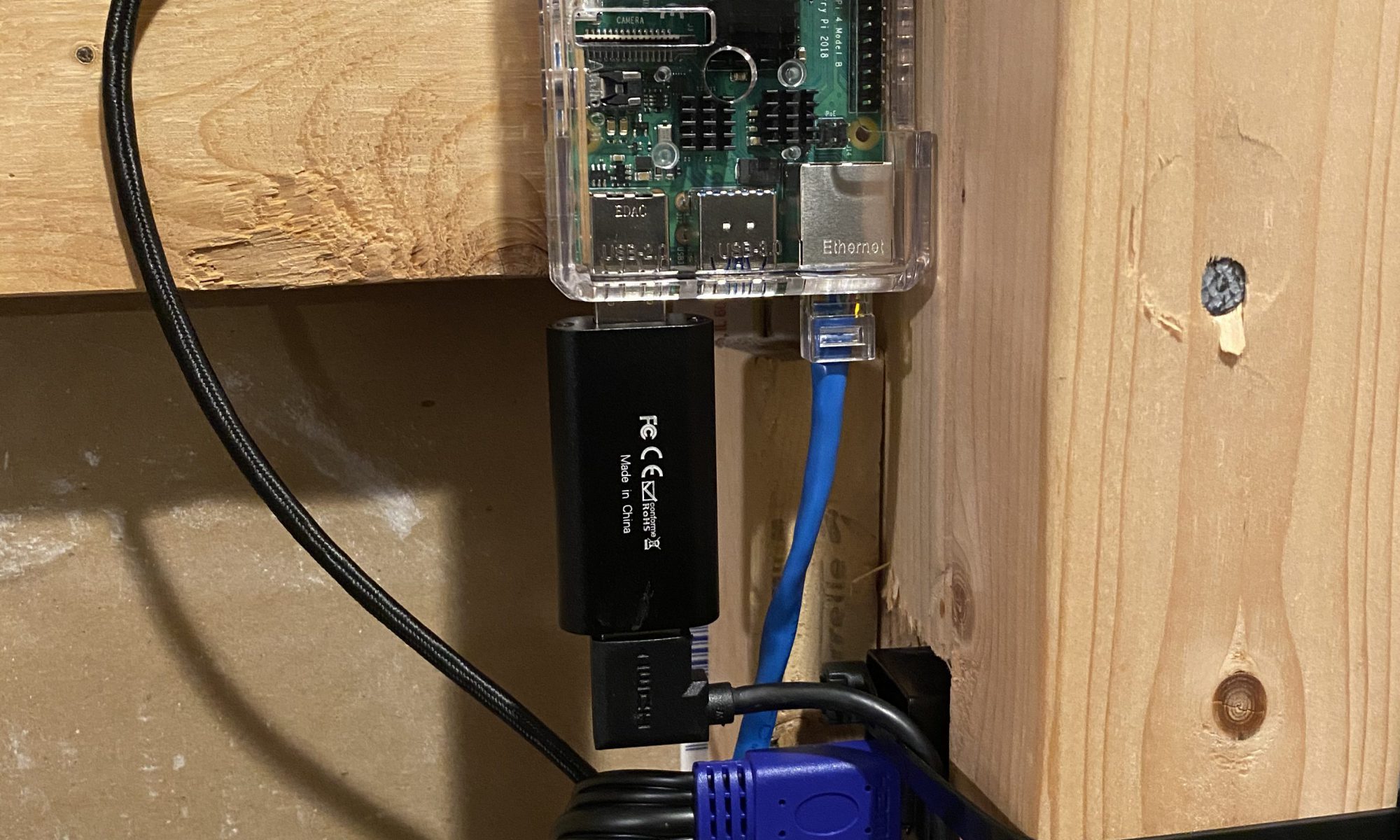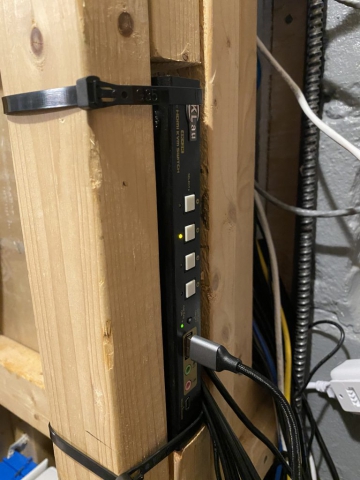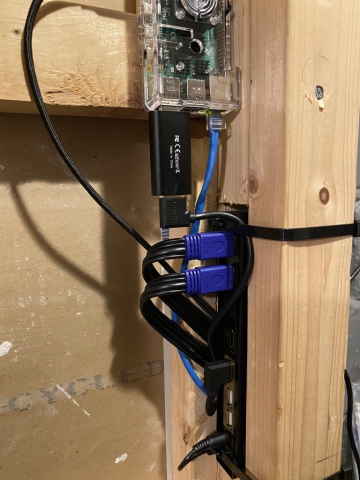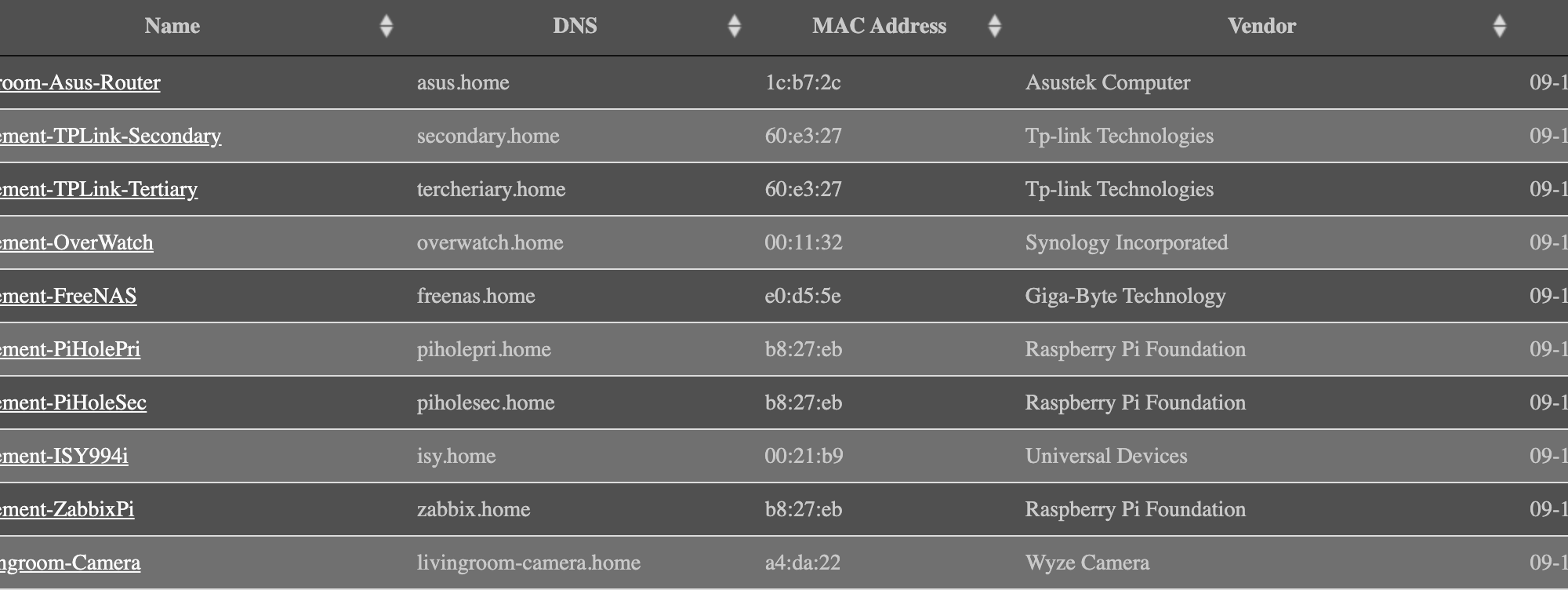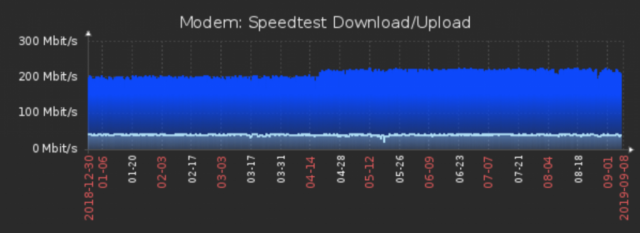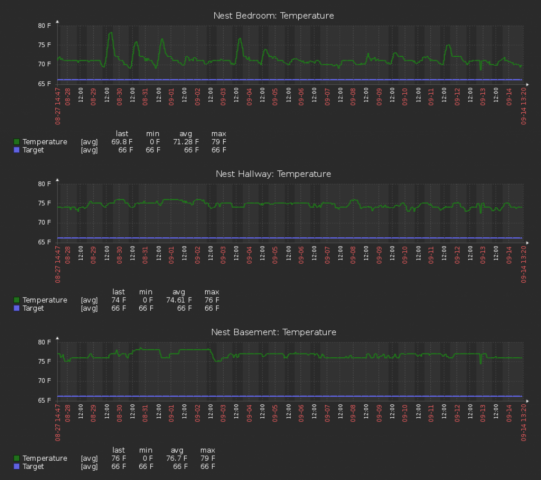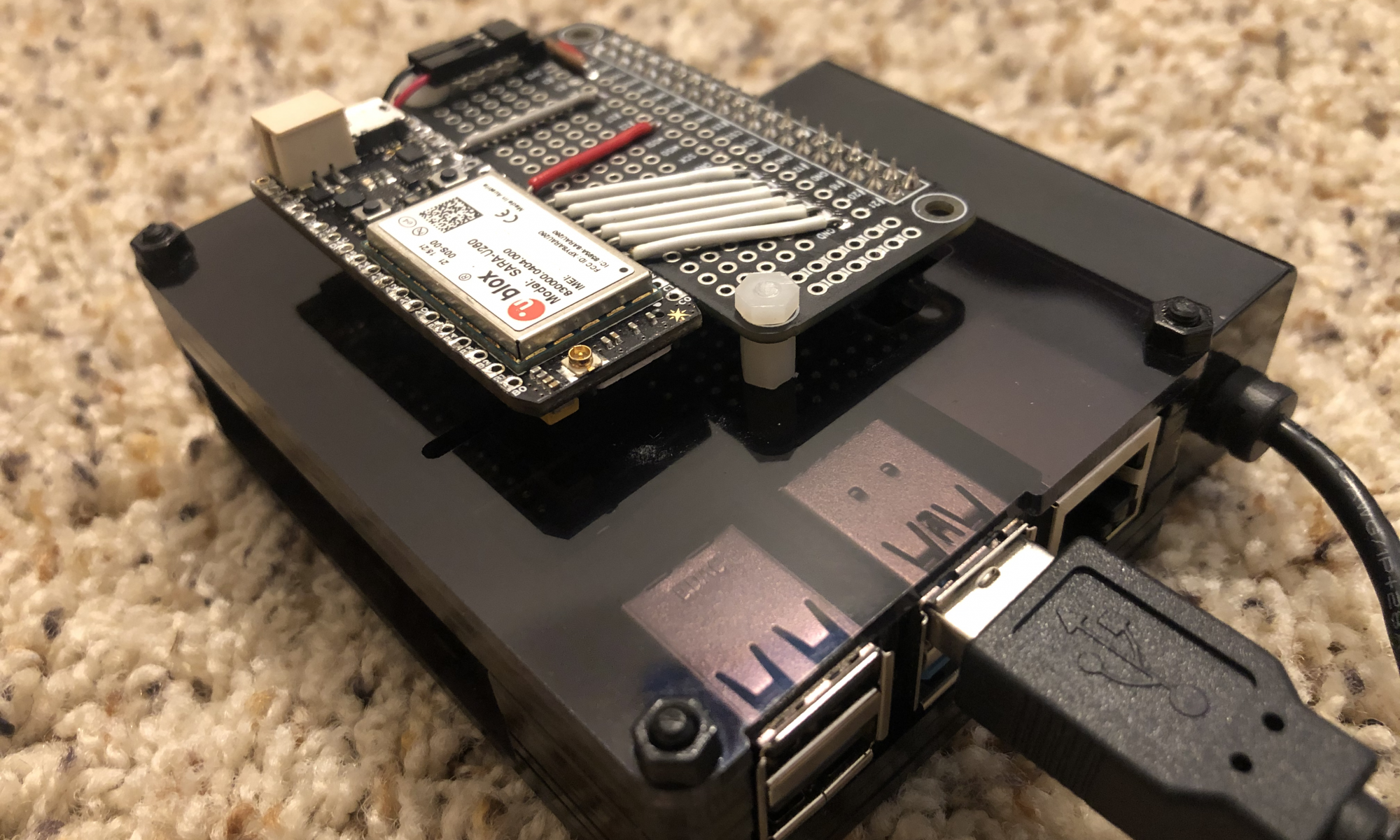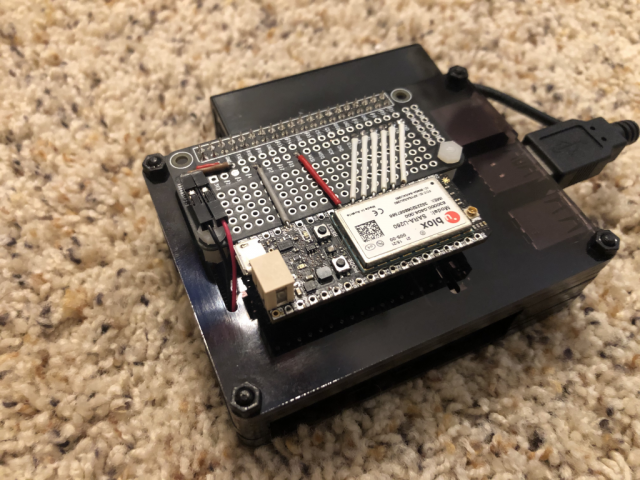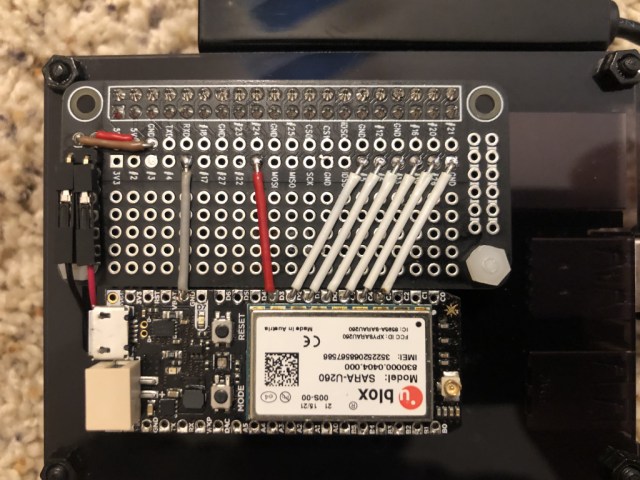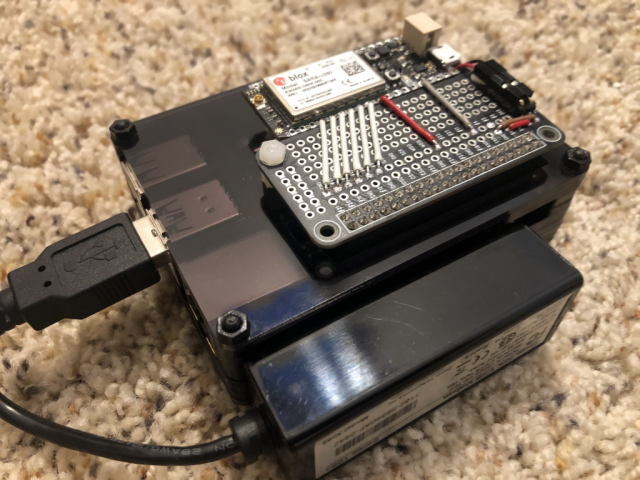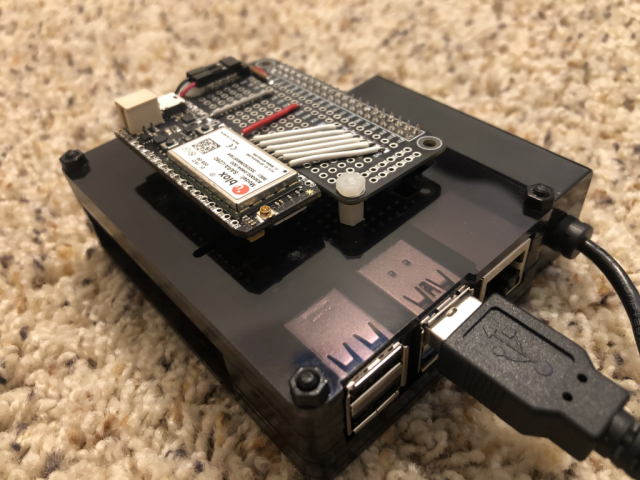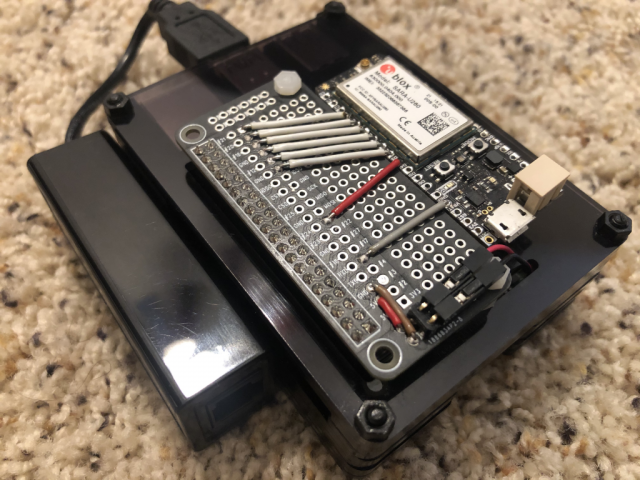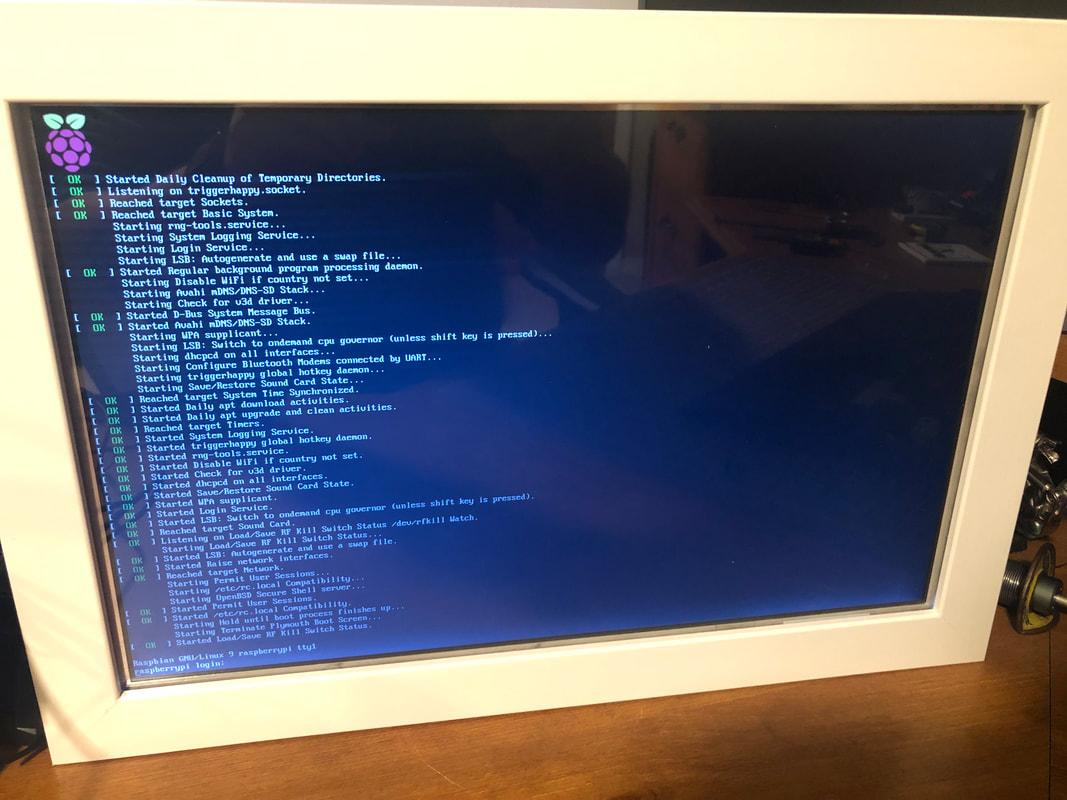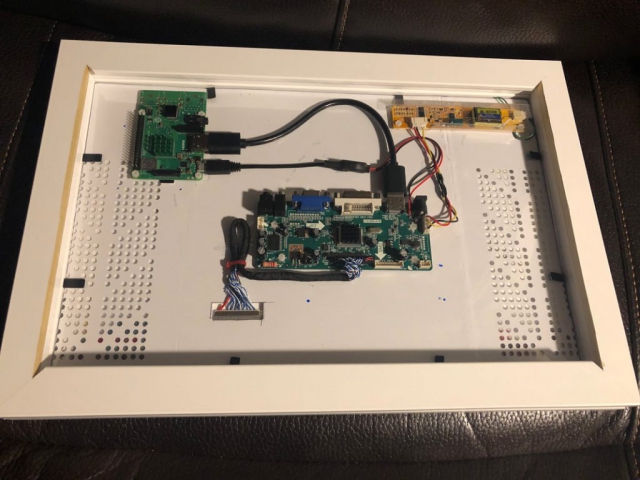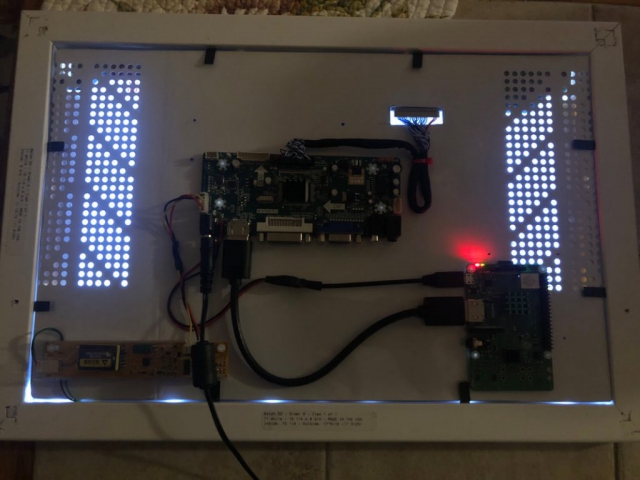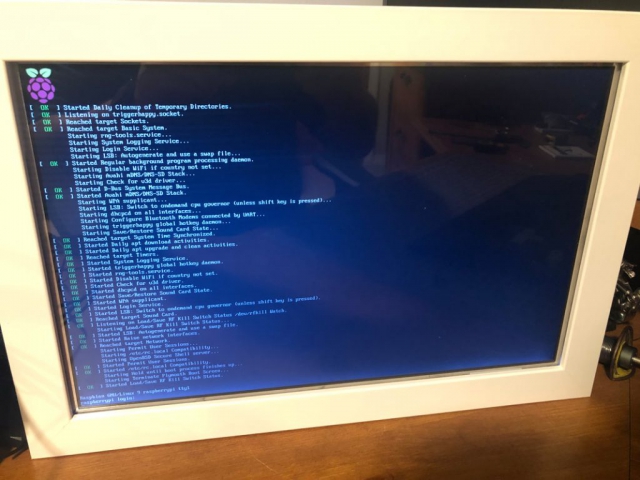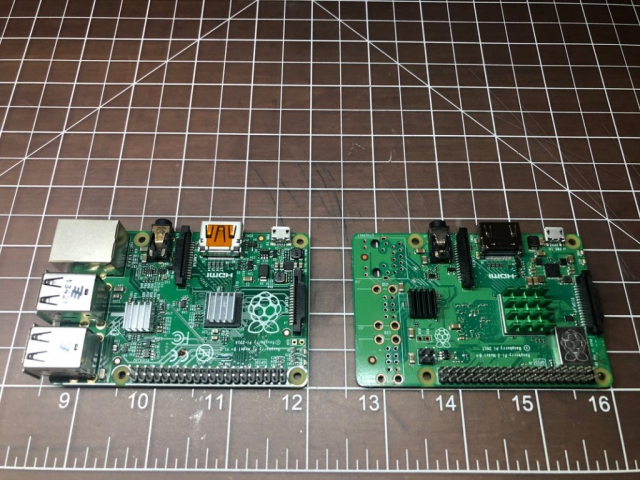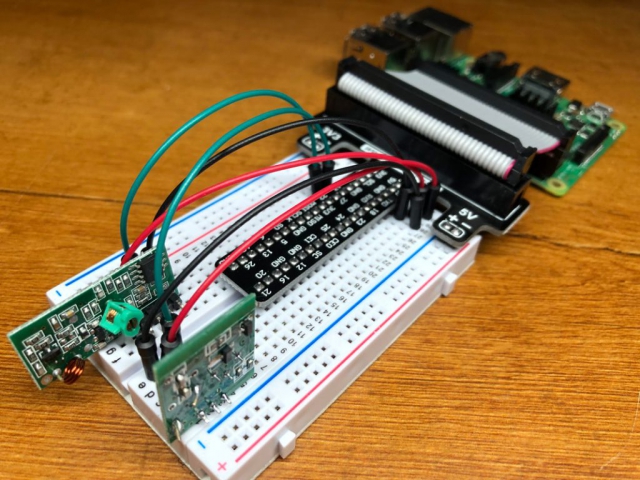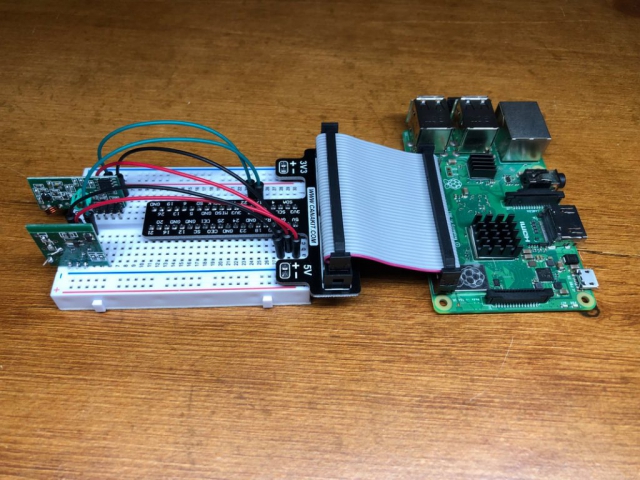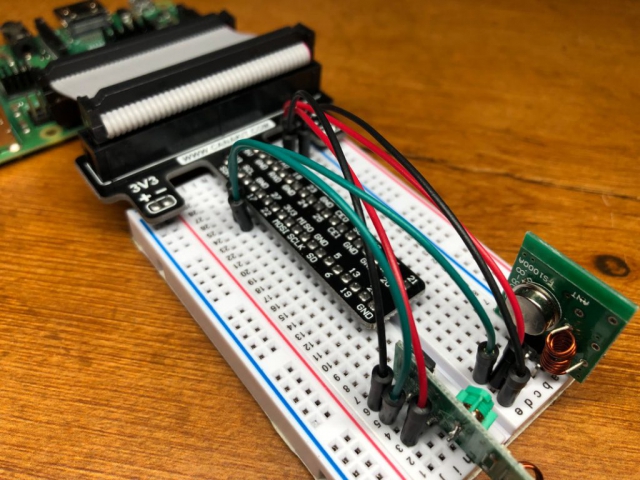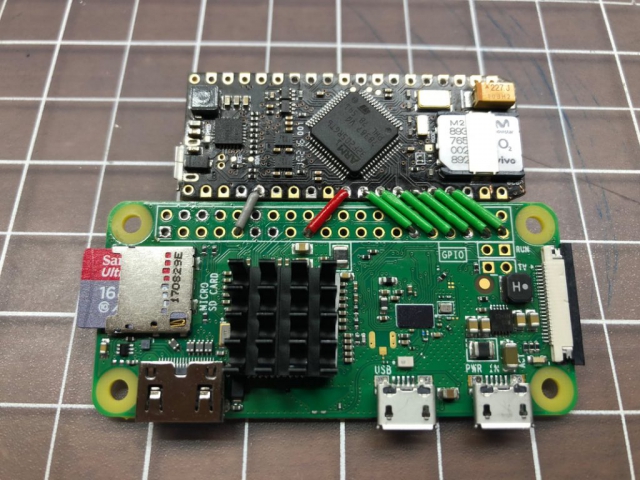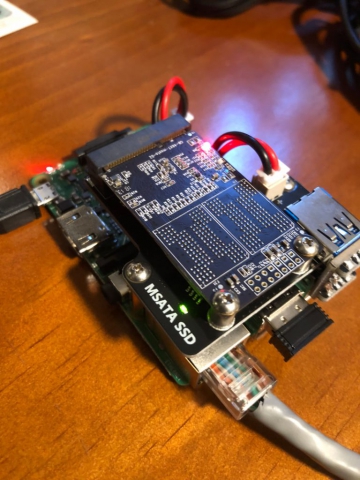I have a few bare metal servers that sometimes need a console hookup. Since they are in a closet, this causes a problem. Enter TinyPilot. Using a normal KVM and a Raspberry Pi, now I can remotely manage the servers via nginx.
Home Inventory
I wanted something to keep track of all the devices I had on my network. While installing Zabbix, I had to install MariaDB (MySQL), so I used that database to house the inventory of devices. This also uses PHP, jQuery and DataTables on the front end and Bash, Python and GO on the backend.
The scripts connect to and parse the data from my routers DHCP server logs. Then match that to DNS (running on 2 PiHoles), looks up the OUI of the MAC address for manufacturer and scans it’s ports looking for SSH, HTTP or HTTPS.
PiZabbix
https://linuxhint.com/install_zabbix_raspberry_pi/
While investigating the use of Zabbix for my department to use, I found a lot of uses for it in my house. I have it monitoring many of my IOT devices found on my Hardware Projects page. At first I was going to install it in a VM on my FreeNAS server, but I found installing it on a Raspberry Pi easier and would take the iops away from my main storage array. I’m currently in the process of updating to a Raspberry Pi 4 and better USB 3.0 storage.
Pi Cellular 2.0
I’ve started upgrading all the Raspberry PIs in the house to Pi4. The Electron connected Pi was the first. This time around I soldered the Electron to a GPIO Proto board hat to make changing the hardware easier in the future. I also added this nice case and a fan inside. Unfortunately, I tried to run the Pi on POE but that caused issues with the GPIO pins that I couldn’t figure out.
Pi Magic Mirror
Pi 433Mhz
Pi Cellular
One example is if the house loses Internet (the Pi can’t ping a webpage), I get a notification on my cell phone. Another reason is if the house loses power, (the Pi turns off), the Electron sends another notification since it’s on a battery backup.
This Pi also has a USB modem attached to it, and using NCID, I’m able to receive a notification of who is calling my house phone on my cell phone.

